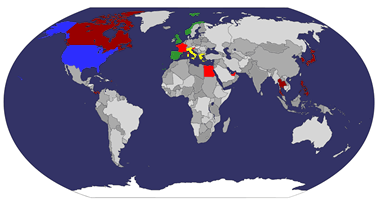"Drunken sailors" have been removed from the lyrics of a nursery rhyme in a government-funded books project.
But the Bookstart charity says the re-writing of What Shall We Do With the Drunken Sailor? has "absolutely nothing to do with political correctness".
The charity says that the shift from drunken sailor to "grumpy pirate" was to make the rhyme fit a pirate theme, rather than censorship.
"Put him in the brig until he's sober," has also been lost in the new version.
*******
"We wanted to find a rhyme which would fit in with this subject and this one has a tune which is instantly recognisable by all," said a statement from Bookstart.
"The inclusion of action lyrics like 'wiggle' and 'tickle' offer parents and small children an opportunity to interact, have fun and enjoy acting out the rhyme together."
*******
This is the latest in a series of disputes over nursery rhymes.
There were complaints in 2006 about pre-school children attending two nurseries in Oxfordshire being taught "Baa Baa Rainbow Sheep".
Riiiiight....
ZUI also this BBC article (dated 23 Jan 08):
A story based on the Three Little Pigs fairy tale has been turned down by a government agency's awards panel as the subject matter could offend Muslims.
The digital book, re-telling the classic story, was rejected by judges who warned that "the use of pigs raises cultural issues".
*******
The CD-Rom digital version of the traditional story of the three little pigs, called Three Little Cowboy Builders, is aimed at primary school children.
But judges at this year's Bett Award said that they had "concerns about the Asian community and the use of pigs raises cultural issues".
*******
The feedback from the judges explaining why they had rejected the CD-Rom highlighted that they "could not recommend this product to the Muslim community".
They also warned that the story might "alienate parts of the workforce (building trade)".
Here is the BBC's article (dated 7 Mar 06) on the rainbow sheep.
Idiots.
H/T to my old friend JP.















 Home
Home  USS Olympia (SSN 717) 1983-1989
USS Olympia (SSN 717) 1983-1989  USS Simon Lake (AS 33) 1989-1992
USS Simon Lake (AS 33) 1989-1992  USS Jacksonville (SSN 699) 1993-1995
USS Jacksonville (SSN 699) 1993-1995  USS Providence (SSN 719) 1998-2003
USS Providence (SSN 719) 1998-2003 
































